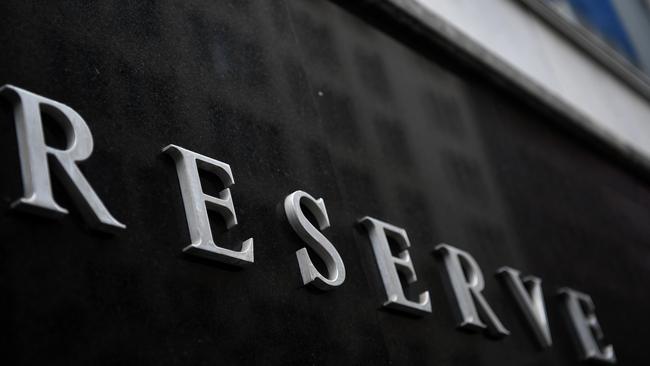Risk averse RBA dominated by ‘no bad news’ culture, FOI documents reveals
A confidential report has revealed a culture of ‘no bad news’ and ‘edited’ reports at the Reserve Bank.

The Reserve Bank committed its management to leadership training in response to a secret report into its internal culture and risk-averse attitude two years ago, newly released documents reveal.
The central bank also slashed its risk register - an internal measure of business risks faced in day-to-day operations - by almost 530 items in response to the report.
The confidential report from EY – released by the central bank following a Freedom of Information request – revealed the Reserve Bank was perceived to be dominated by business “silos”, with a culture of senior leadership dominating discussions and risk averse staff aiming for “no bad news” outcomes.
It also found poor targets around risk and an overbearing management structure that saw staff locked in meetings.
A deeply ingrained work culture perpetuated these issues.
The RBA admitted as much in its response to the risk culture assessment from EY, with internal minutes noting its Risk Management Committee “acknowledged the need to make sure that discussions were not dominated by more senior people”.
“The committee agreed that there were inefficiencies introduced by too many layers of governance in some areas,” the committee minutes said.
“This was attributed to the ‘pendulum swinging too far’ with regards to project management (rather than risk management), staff’s heavy emphasis on consultation, and a lack of clarity around the role of some meetings”.
The bank also acknowledged the issue of strong views from the top, noting it had rolled out leadership training to management in response.
“This training has focused on understanding the shadows that leaders cast, which is particularly relevant in terms of addressing any gaps between senior management’s intentions with respect to feedback and messages, and how staff perceive this feedback,” the minutes said.
The bank’s Executive Committee is currently overseeing a program of work designed to improve staff’s willingness to speak up on issues including fraud, unethical behaviour, personal conduct issues, and concerns in other areas.
EY auditors found the RBA had “many risk culture mechanisms in place” but there were “lower levels of understanding” among front-line staff.
The report authors said closing the “understanding gap could help improve the RBA’s risk culture significantly”.
RBA minutes noted EY had highlighted a desire for more guidance from senior management on “what risk-taking was acceptable” in light of initiatives by the bank such as “considering the opportunity costs of seeking a ‘gold standard’.”
“There is a perceived culture of ‘no bad news’, supported by examples where targets were typically 100 per cent and returns or status reports were edited to show 100 per cent success,” EY auditors said in the report.
EY called for the RBA to “develop examples of risk appetite translating to risk tolerance and limits” in combination with a metric for assessing risks and encourage management to “report back to team members where an issue has been raised and explain what decisions are being taken”.
“Frame risk management in a way that brings out the positives for staff rather than focusing on compliance aspects,” the auditors said.
The RBA in response slashed its consolidated risk register from around 870 items to almost 340.
The report authors also called for the RBA to review the “diversity” of its hires in department management and front line supervisor roles.
“There were comments raised through interviews and focus groups on the potential tension the bank’s focus on ‘intelligent inquiry’ and the cognitive homogeneity of the workforce,” the EY auditors said.
“While the bank no doubt employs top talent across required disciplines, many employees join in early career stages, come from similar professional disciplines and learn Bank way of working which are incorporated into their roles.”




To join the conversation, please log in. Don't have an account? Register
Join the conversation, you are commenting as Logout